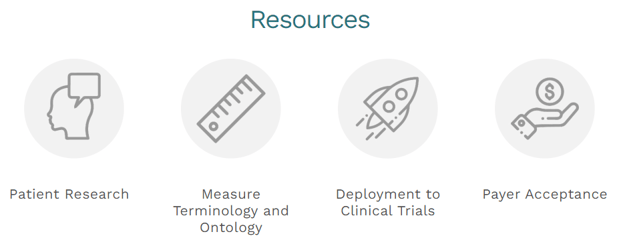
Developing a Patient-Centric Measure of Nocturnal Scratch: A Q&A with DiMe

|
Written by Sylvain Zorman, PhD |
The adoption of wearable Digital Health Technologies (DHTs) to measure outcomes of interest in clinical trials is rising. Digital outcome measures can improve upon or complement existing patient reported outcomes by objectively and continuously assessing patient behaviors in a real-world environment. One of the benefits compared to traditional measures, which often only capture snapshots in time or collect measures in a laboratory setting, is a more patient-centric outcome measure that reflects real life functioning.
For digital measures to be successfully implemented and accepted as outcomes in drug development, laying the groundwork to establish a shared vocabulary, clinical relevance, and regulatory acceptance is a critical step that cannot be overlooked.
One area where the need for an objective, patient-centric measure is high, and is technically feasible with wearable DHTs, is measuring nocturnal scratch behaviors in dermatological conditions. I had the opportunity to chat with Lucy Cesnakova, MS, Program Lead at the Digital Medicine Society (DiMe) about their development work demonstrating the relevance of measuring nocturnal scratch behaviors to patients with Atopic Dermatitis.
We also discussed her thoughts on the DECODE Nocturnal Scratch working group, launched by ActiGraph in collaboration with several pharmaceutical companies in 2023, which is taking the next step to deliver a valid, scalable digital measure of nocturnal scratch for use in drug development and clinical care.
Q&A with Lucy Cesnakova
Sylvain Zorman: The DECODE initiative builds on work conducted by the Digital Medicine Society aiming to establish Nocturnal Scratch as an endpoint of interest in patients with Atopic Dermatitis. Why did nocturnal scratch become an area of focus for DiMe?
Lucy Cesnakova: We saw an incredible opportunity for collaboration in pre-competitive space, as several organizations separately showed interest in this new digital measure. From here, we developed a partnership where we could learn from each other and build new evidence around digital measurement of nocturnal scratch.
Sylvain Zorman: Can you provide a brief overview of the DiMe nocturnal scratch project and tell us a bit about each of the workstreams?
Lucy Cesnakova: Absolutely. The project had four workstreams with the overall goal to enhance the value of research and drive broad acceptance by patients, prescribers, regulators, and payers of digital measurement of nocturnal scratch as an endpoint for Atopic Dermatitis.

Patient Research - The first workstream was aimed at patients and exploring their experience with Atopic Dermatitis signs and symptoms and specifically nocturnal scratch. In this part, we performed mixed-methods research that was based on the previously published Measures that Matter framework. We interviewed patients and their care partners individually and also conducted a survey, and the results are available in our publication. The results positioned nocturnal scratch as one of the concepts of interest worth capturing as a distinct outcome for clinical and research purposes.
Deployment to Clinical Trials - The second workstream was centered around deployment in clinical trials. Here, we got really practical. We invited clinical operatives, researchers, and PIs from both industry and academia, as well as patient representatives. We identified pain points that may stand in the way of bringing a novel digital measurement into clinical trials and created a set of resources that address these gaps, such as internal communication about value, selecting the right technology, strategies to optimize patient experience, and more.
Measure Terminology and Ontology - In the third workstream, we looked at the measurement parameters of nocturnal scratch described in literature. Based on this evidence, we created a set of recommended ontologies and parameters to serve researchers as a common agnostic "dictionary" with the goal of making research more unified and comparable. We also spoke with the FDA to get regulators' feedback on our research efforts toward measure standardization and acceptance.
Payer Acceptance - In the fourth and final workstream, we collected insights from the payers. Based on our discussions, we developed a set of action items that are worth following for payer acceptance of digitally measured nocturnal scratch. The topic of value-based healthcare incorporating digital measurements is still resonating, and more strategies are being developed to build bridges from clinical research to healthcare practice.
Sylvain Zorman: Why do you think that it was critical that the DiMe Nocturnal Scratch consortium be technology agnostic and leave the development of such technology out of scope?
Lucy Cesnakova: Our goal was to create a library of evidence that can serve as an inclusive path for further research both in the technological and clinical spheres. Any technology measuring nocturnal scratch needs common ground, a shared dictionary, and a base of evidence to support their development and acceptance so that all results can be translatable and comparable.
Sylvain Zorman: One of the key resources DiMe provides as part of the nocturnal scratch project is a mixed methods Patient Research study and publication. What were the big and unexpected learnings?
Lucy Cesnakova: This research took us directly into patients' lives and was extremely revealing about their day-to-day experience with Atopic Dermatitis. We saw the enormous effect  Atopic Dermatitis has on all aspects of people's lives - from the negative effects on sleep, social situations, or workplace selection.
Atopic Dermatitis has on all aspects of people's lives - from the negative effects on sleep, social situations, or workplace selection.
A big insight was using the survey data to quantify how much sleep people miss due to the effects of Atopic Dermatitis, such as nocturnal scratching. We found it is around 1 hour per night, which is not a negligible amount.
Sylvain Zorman: How do you think a validated and scalable digital measure of nocturnal scratch, the goal of the DECODE project, can help advance patient-centric research?
Lucy Cesnakova: Technology development and validation are what we were hoping to support, so we are excited to see it is coming up in DECODE. It's even more amazing to see it in another collaborative consortium. This way patients and researchers can eventually get access to high-quality, meaningful, and truly patient-centric digital measurement.
Sylvain Zorman: Getting buy-in from regulatory agencies and gaining payer acceptance is a crucial aspect of realizing the potential of digital measures in use cases such as nocturnal scratch. Based on what DiMe has learned, what are a few pieces of advice you have for sponsors to best collaborate with these groups?
Lucy Cesnakova: We definitely recommend engaging with regulatory and payer bodies early and often. For example, both FDA and EMA have programs for non-binding feedback on scientific topics including development and acceptance of novel digital measurements in specific therapeutic areas.
In the payer area, we recommend finding partners open to discussion. The first step to start these dialogues can be collecting real-world data during the research studies and showcasing how these can add value to future care decisions.
Sylvain Zorman: How can the outcomes of the DECODE Nocturnal Scratch project contribute to these types of conversations?
Lucy Cesnakova: Having actual technology that is built on past research and collaboration marks a strong turning point. It shifts our conversations from general topics to specific ones. The regulators and payers can discuss very specific data and findings, uncovering the utility and potential of both the developed technology and the measure itself. The new technology can also help better articulate the measurement of nocturnal scratch, its context of use, concept of interest, etc.
Sylvain Zorman: Within this context, nocturnal scratch is just one concept of interest in a single therapeutic area - dermatology. What do you think are the broader implications of this type of pioneering work in the digital medicine field?
Lucy Cesnakova: Our work sends a lot of positive messages across the field. First and foremost, with effective collaboration between sectors and researchers we can get much further than alone.
We proved that it is important to base development of new digital clinical measurements in meaningful aspects of patient lives. We showed that it is viable and needed to start early conversations with regulatory and payer stakeholders.
We are already seeing similar collaborations popping up, and we hope the work of DiMe and DECODE will be replicated in many therapeutic areas with strong patient needs. In the end, we all strive for better research for better people's health.
For more information about the use of digital endpoints in dermatology research, view ActiGraph's Digital Endpoint Resource Guide: Dermatology.